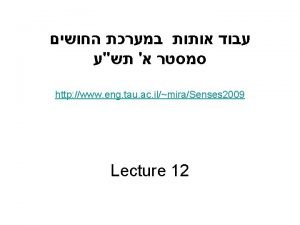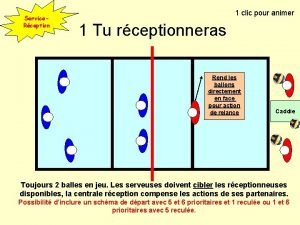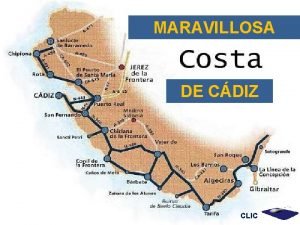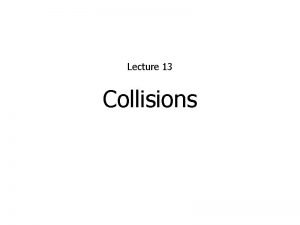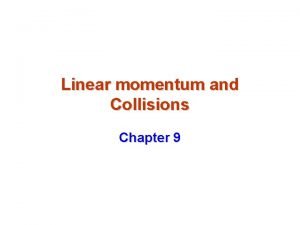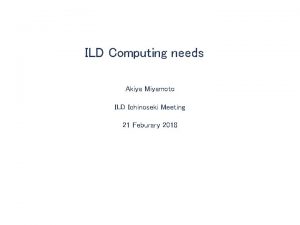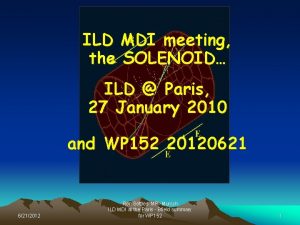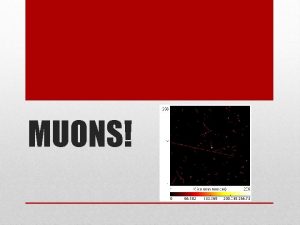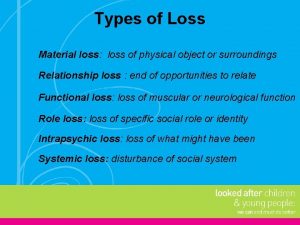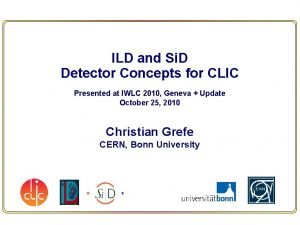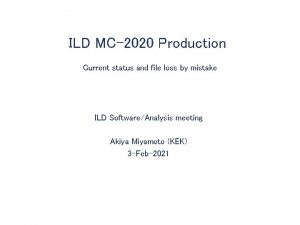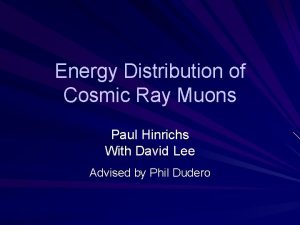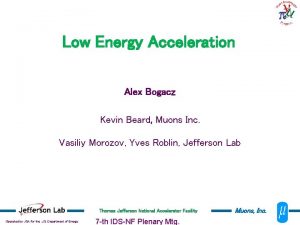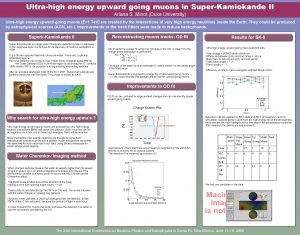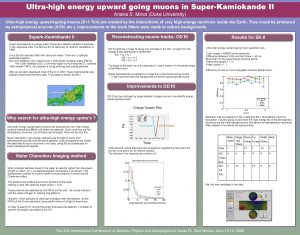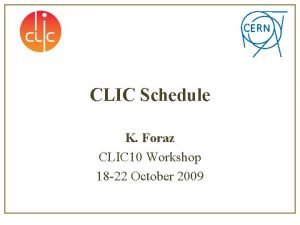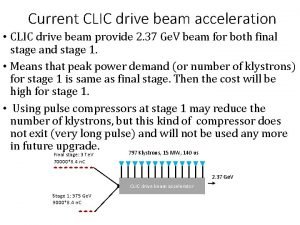Energy Loss of Muons in the CLIC ILD




























- Slides: 28

Energy Loss of Muons in the CLIC ILD Detector Sinan Kefeli Supervisors: Jacopo Nardulli & Erik van der Kraaij

Outline n Aim of project: muon background n Brief summaries of: - Particle Detection - Catastrophic muons - ILD Detector Overview n Simulations n My results

Aim of the Project n Beam Halo Muons are pair production of muons from beam particles and beam gas n These muons appear as background at the detectors in a physics event n Would like to separate the background from the events n My part: determining how often and how much energies are deposited from the muons

Particle Detection n Detect particles by interaction with materials n Energy loss is statistical and fluctuates from event to event n Particles lose energy inside matter, which is a Landau Distribution: Prob(energy loss E) inside matter of thickness h

Catastrophic Muons (Atlas paper) n Testbeam at CERN H 8 n Muons traversing matter mainly lose energy by ionization n Total energy loss increases with increasing momentum (atlas paper: http: //www. sciencedirect. com/science/article/pii/S 0920563207009747 )

CLIC ILD Detector

CLIC ILD Detector My simulations were on the HCal only

Simulations Muons with momenta: n 5 Ge. V n 20 Ge. V n 50 Ge. V n 100 Ge. V n 500 Ge. V n 1000 Ge. V are simulated with Mokka 10, 000 events for each momenta

Number of hits in layers

Clustering

How Much Energy In Clusters n 1 MIP = 0. 00082 Ge. V independent of momentum of the muon n Measure the energy stored in the clusters in terms of MIPs

Energy stored in layers - Peaks

Cluster definition n Some events have higher energy depositions n Determining cut values n Clusters: -Many particles in the layer -More energy storage

Cluster Definition – Number Cut Hits Cut = MPV + 5*Sigma = 8

Cluster definition energy cut

Cluster Cut

Cluster energy in 10 layers

Results n How often do clusters occur? n How much energy is stored in clusters?

How Often Do Cluster Occur – 30 MIP Muons with different momenta are simulated for 10, 000 events

Energy stored in clusters in MIPs for 30 MIP cut

MPV and Sigma for 30 MIP cut

How Often Do Cluster Occur – 8 MIP Muons with different momenta are simulated for 10, 000 events

Energy stored in clusters in MIPs for 8 MIP cut

MPV and Sigma for 8 MIP cut

Conclusions n Investigated the energy loss of muons by identifying clusters n Looked at cluster frequency and the amount of energy lost by the clusters n Comparison of different energy cut definition for the clusters n Measured cluster energy that increases with increasing muon momentum

backup

Catastrophic Energy Loss n Pair Production n Bremsstrahrlung n Nuclear Interactions n Knock-on electrons In this regime, these effects dominate over the energy lost due to ionization.

Landau Distribution – Energy loss for 100 Ge. V muons inside W
 Muons
Muons Nurse inin
Nurse inin Latex allergy icd 10
Latex allergy icd 10 Ild
Ild Ild.deb
Ild.deb Ild vs led
Ild vs led Ild
Ild Unit cost meaning
Unit cost meaning Chanson clic clac saint nicolas
Chanson clic clac saint nicolas Double entry sales invoice
Double entry sales invoice Objetos con la letra v
Objetos con la letra v How to compute net of vat
How to compute net of vat Rception
Rception Sistema web res. 1102-404 y res. 785
Sistema web res. 1102-404 y res. 785 Clic paris emeraude
Clic paris emeraude Soplos mesosistolicos
Soplos mesosistolicos Clic
Clic Imagenes de clic
Imagenes de clic Clic
Clic Cern clic
Cern clic Clic sécure citoyen
Clic sécure citoyen Alphabet etrusque
Alphabet etrusque Rey orozco
Rey orozco Energy energy transfer and general energy analysis
Energy energy transfer and general energy analysis Energy energy transfer and general energy analysis
Energy energy transfer and general energy analysis Energy lost in inelastic collision
Energy lost in inelastic collision Elastic collisions kinetic energy
Elastic collisions kinetic energy Hát kết hợp bộ gõ cơ thể
Hát kết hợp bộ gõ cơ thể Frameset trong html5
Frameset trong html5






